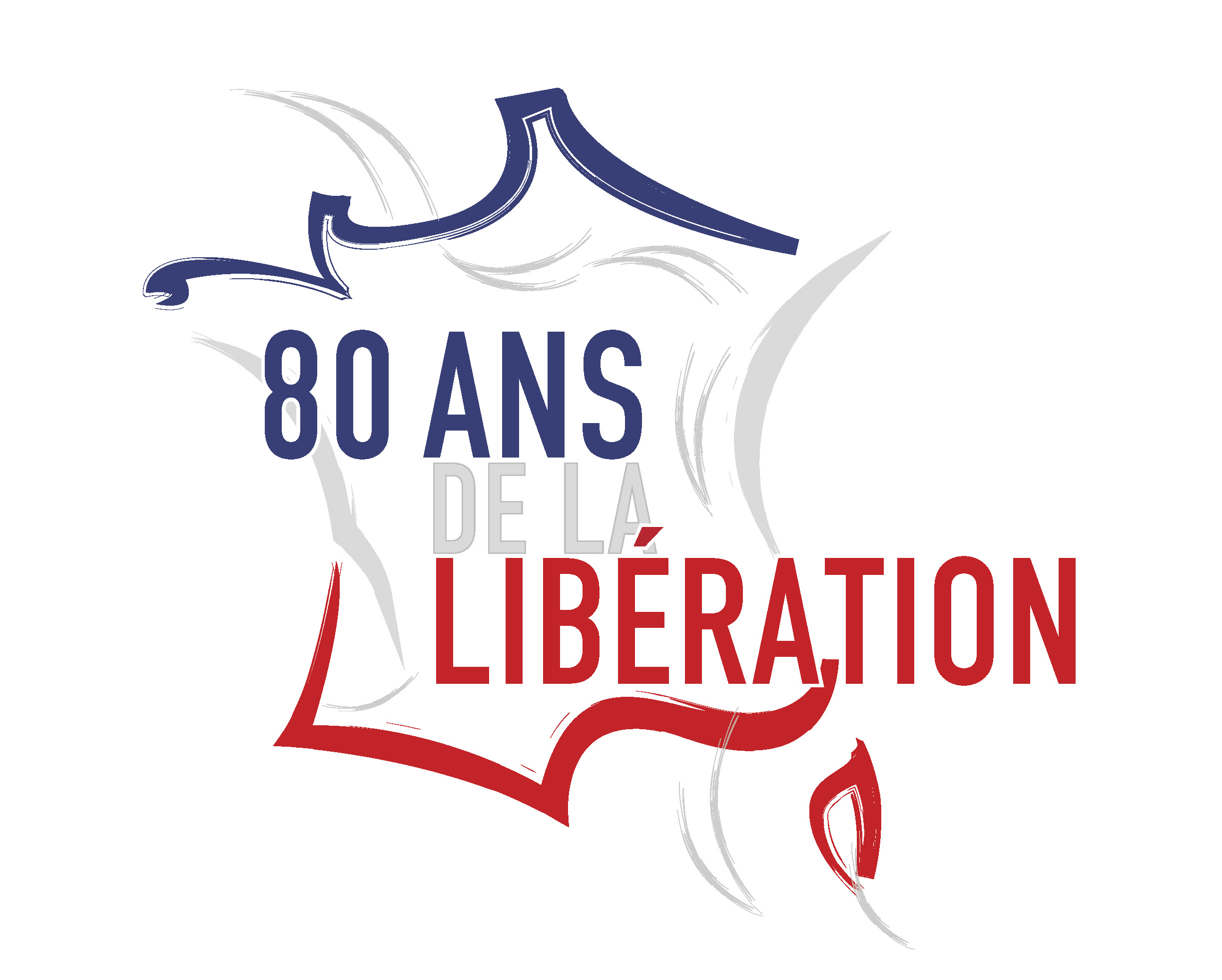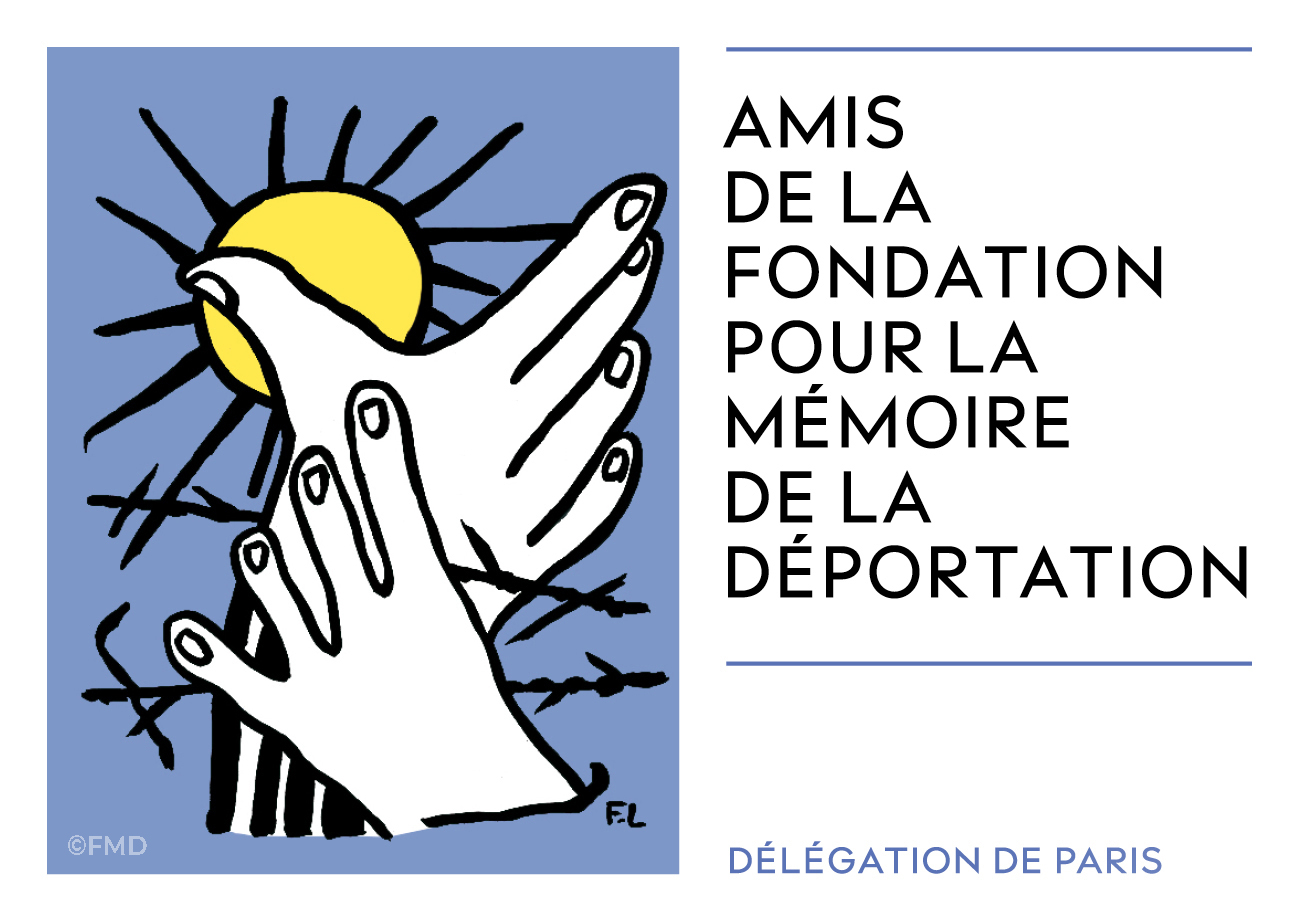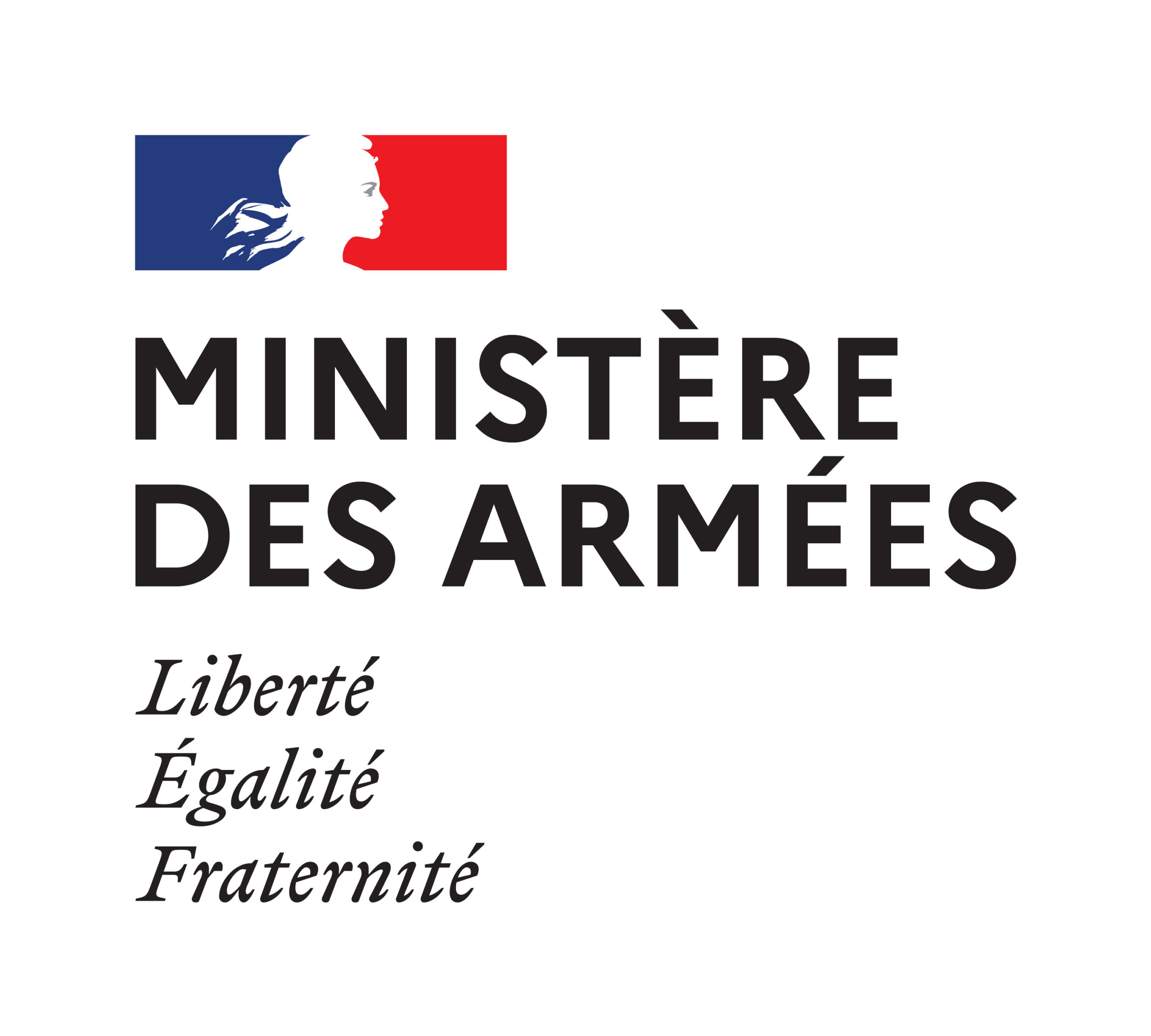RAWA-RUSKA
Opening : juin 1941
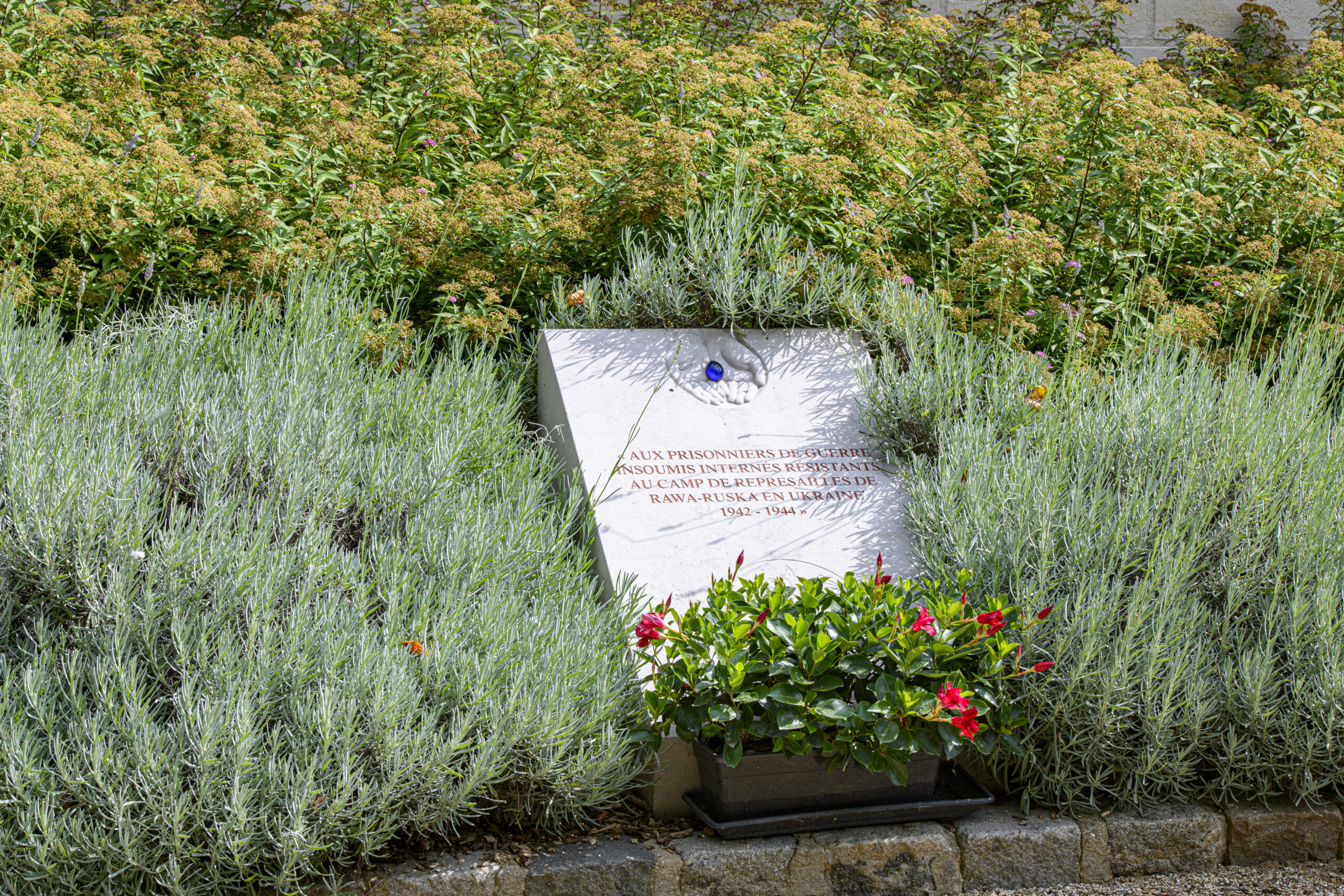
© Vincent Gerbet
Monument description
Work of the French artist Gérard Collin-Thiébaut, it is a simple stone slab of Comblanchien, inaugurated on October 14, 2016 in tribute to the memory of «Those of Rawa-Ruska», the 25,000 French and Belgian prisoners of war of this reprisal camp.
In the upper part, two joined hands hold a ball of blue glass paste, symbolizing a drop of water, water very rare in this camp that Winston Churchill named «the camp of the drop of water and slow death».
In the lower part is engraved the logo of the French association «Those of Rawa-Ruska and their descendants». It depicts two hands breaking their chains to let a dove of peace fly away. The association’s magazine is called EnVols.
On the stele is inscribed:
“TO PRISONERS OF WAR
INTERNAL RESISTANCE
AT THE REPRESAILLES CAMP
RAWA-RUSKA IN UKRAINE
1942-1944”
Rawa-Ruska camp
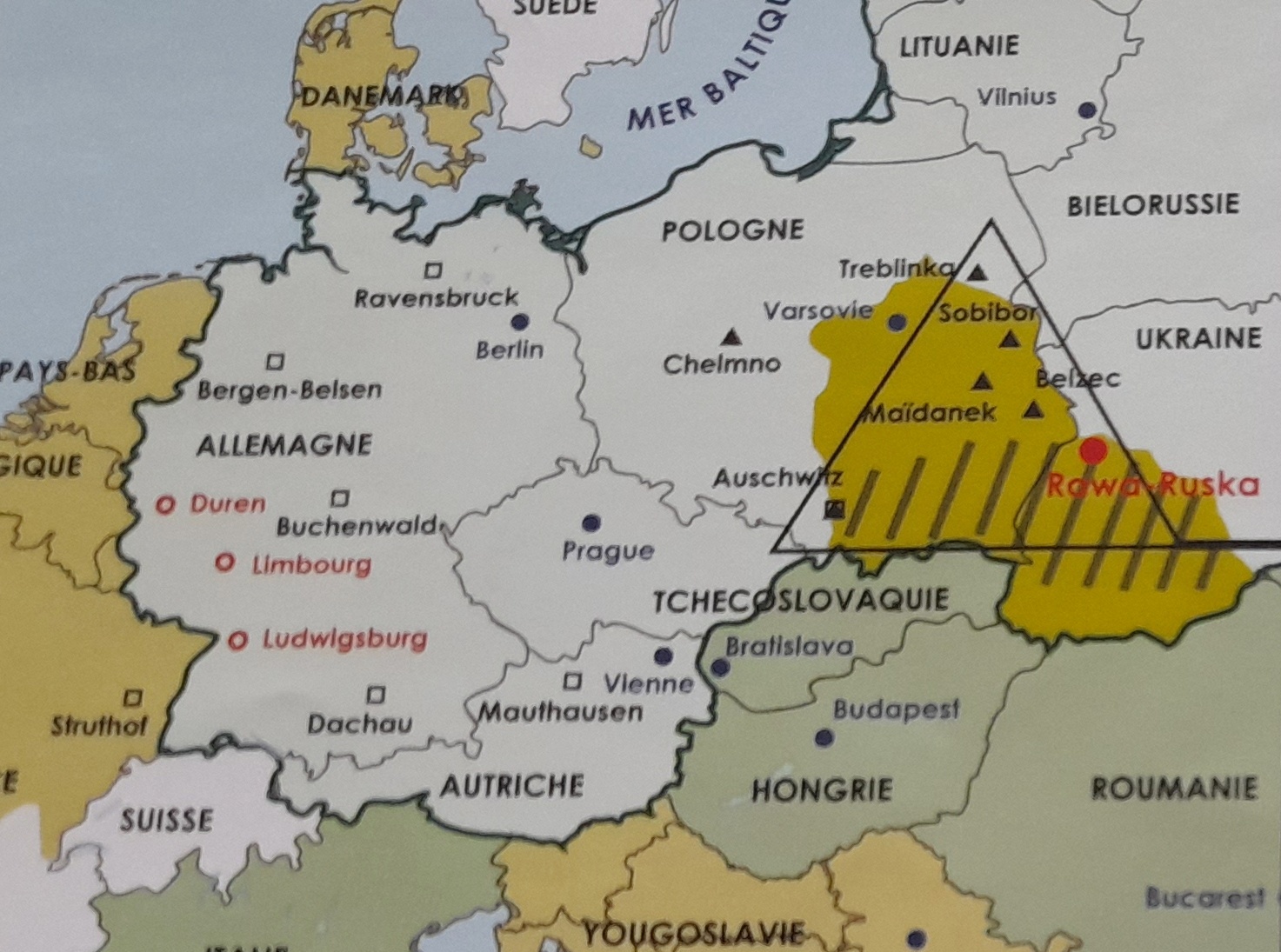
© Ceux de Rawa-Ruska
Rawa-Ruska is a small town in Ukrainian Galicia located near the Polish border, north of Lviv (formerly Lvov, in German Lemberg) in the «Death Triangle», near Belzec, Majdanek and Sobibor.
At the beginning of the Second World War, in September 1939, Rawa-Ruska was invaded by the Red Army. In June 1941, the Rawa-Ruska camp was created by the Nazis during Operation Barbarossa (invasion of the USSR by the German army), located in a region of swamps infested with mosquitoes. The climate is continental (hot summer, freezing winter).
The camps of the «300 series» are intended for Soviet prisoners.
Between July 1941 and April 1942, 18,000 to 20,000 died there.
Stalag No. 325 was created in an old cavalry barracks consisting of stables transformed into dormitories, barracks, watchtowers, a barbed wire fence. None of the buildings are provided with water, light, heating, latrines, straw. There is only one tap of water – not potable – for the whole camp. The prisoners are barefoot in clogs, which sometimes serve as bowls. They suffer from malnutrition and many diseases (typhus, dysentery, etc.).
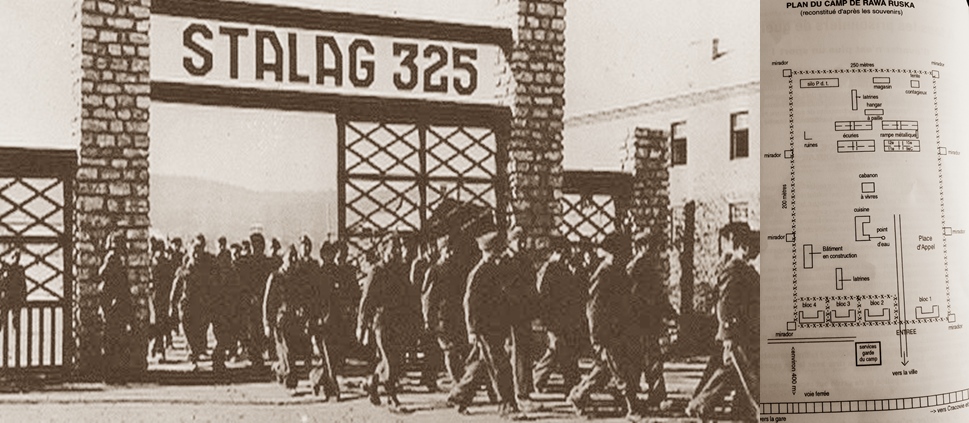
Entrée et plan du Stalag 325
© Ceux de Rawa-Ruska
A reprisal camp, this Stalag 325, after detaining Red Army soldiers, was intended for the first convoy of French and Belgian prisoners arrived on 13 April 1942.
Who are these French and Belgian prisoners of war?
After the Battle of France and the end of the fighting in June 1940, 1,800,000 French and 225,000 Belgians were taken prisoner and transported to Germany by rail. The prisoners are gathered in triage camps. They are humiliated (registration with photo of identity, shaved skull like convicts) and are sent to Stalags (kommandos of factories, forests, concrete construction, roads, work in coal or salt mines, farms, quarries, railways, etc.).
Many of these soldiers refuse working conditions, sabotage, attempt escapes. To punish and tame these «insubordinate», the Germans assign them in disciplinary kommandos then they decide, in March 1942, to transfer them to Rawa-Ruska which becomes a reprisal camp for recalcitrant prisoners of war. These prisoners of war cannot be sent to concentration camps. They are military, not civilians, and in the Rawa-Ruska area the Geneva Convention, which guarantees a minimum level of protection for any prisoner of war, does not apply.
24 to 25,000 prisoners of war were directed to Rawa-Ruska and its sub-camps.
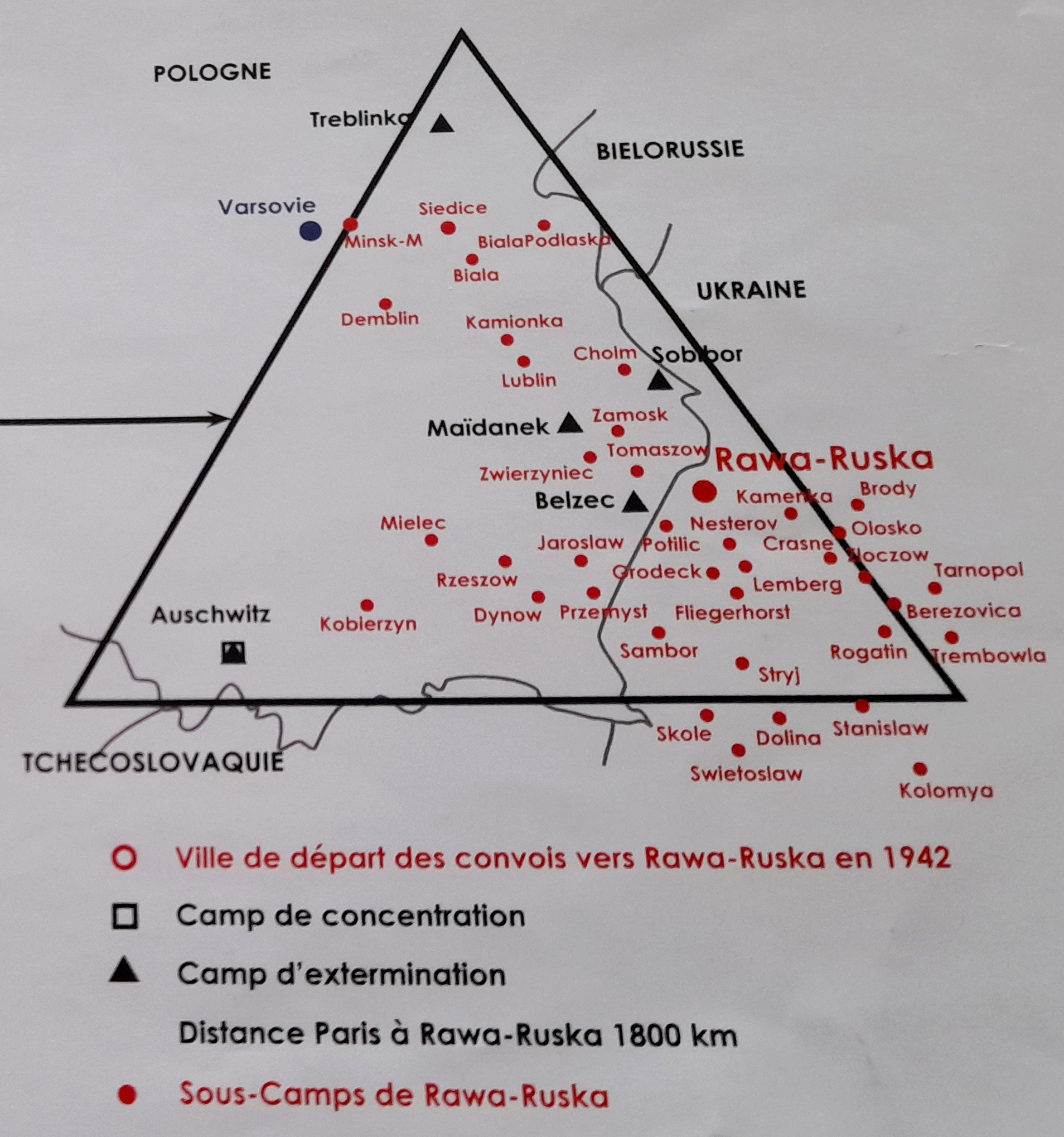
© Ceux de Rawa-Ruska
Sub-camps
Other convoys arrived until March 1943. The sub-camps were created, some very far from the Rawa-Ruska camp, towards the east, because the number of detainees continued to increase:
– TARNOPOL, the largest, is located easternmost in Ukraine.
It includes two large buildings (barracks built by the Russians but not completed).
On June 7, 1942, 1,800 men were taken by train, packed into old cattle cars.
When they arrive, the prisoners must lay the barbed wire, the chicanes, stone the roads, clear the ground. They are also employed in the repair or creation of roads and railways.
– Zwierzniek, from which 93 prisoners escaped.
– Zloczow: In August 1942 500 men were interned there.
The prisoners were required to carry out various works: construction of barracks, roads, destruction of tombstones in Jewish cemeteries, stones used to build roads. Others cut wood in the surrounding forests, filled with human bones because in this area, the «Einsatzgruppen*» were rampant. This is what was called the «Holocaust by bullets».
*Einsatzgruppen, intervention groups: militarized, mobile police units responsible for the systematic murder of opponents and Jews, acting behind the Eastern Front in the occupied territories (Poland, USSR, Baltic States), obeying the Reich Central Security Office in charge of implementing the Holocaust.
Resistance
The prisoners, despite the inhumane living conditions, keep their spirit of resistance.
The French improvised a parade on July 14, 1942, singing the Marseillaise with their patriotic spirit.
The prisoners, expressing their disobedience to the enemy, had only one idea: to escape to their country. Escapes took place, sometimes spectacular. Some fugitives could join the Polish Resistance or the Russian Partisans, others could arrive in Hungary or Romania, many disappeared without a trace…
Evacuation
In January 1943, the Nazis transferred French prisoners of war to other Stalags.
These prisoners may, when the time comes, be exchanged for prisoners of Afrika Korps. A large majority, unassigned in sub-camps, was directed to the citadel of Lemberg (city designated in German, Lwow in Polish, currently Lviv in Ukraine).
At the advance of the Red Army, on January 19, 1944, the Germans hastily evacuated the remaining prisoners to the East. The next day, the city and the camp were liberated. The remaining prisoners were held by the Soviets until their repatriation to France or Belgium, which took place only on 2 July 1945.
Sources
– Association « Ceux de Rawa-Ruska », Le camp de représailles des militaires évadés résistants, RAWA-RUSKA, Camp 325 en Ukraine 1942-1944, brochure
– Association « Ceux de Rawa-Ruska », revue EnVols, n°290
– https://fr.wikipedia.org/wiki/Rava-Rouska
– https://www.appl-lachaise.net/monument-aux-prisonniers-de-rawa-ruska/
Rawa-Ruska
Opening : juin 1941

© Vincent Gerbet
Monument description
Work of the French artist Gérard Collin-Thiébaut, it is a simple stone slab of Comblanchien, inaugurated on October 14, 2016 in tribute to the memory of «Those of Rawa-Ruska», the 25,000 French and Belgian prisoners of war of this reprisal camp.
In the upper part, two joined hands hold a ball of blue glass paste, symbolizing a drop of water, water very rare in this camp that Winston Churchill named «the camp of the drop of water and slow death».
In the lower part is engraved the logo of the French association «Those of Rawa-Ruska and their descendants». It depicts two hands breaking their chains to let a dove of peace fly away. The association’s magazine is called EnVols.
On the stele is inscribed:
“TO PRISONERS OF WAR
INTERNAL RESISTANCE
AT THE REPRESAILLES CAMP
RAWA-RUSKA IN UKRAINE
1942-1944”
Rawa-Ruska camp

© Ceux de Rawa-Ruska
Rawa-Ruska is a small town in Ukrainian Galicia located near the Polish border, north of Lviv (formerly Lvov, in German Lemberg) in the «Death Triangle», near Belzec, Majdanek and Sobibor.
At the beginning of the Second World War, in September 1939, Rawa-Ruska was invaded by the Red Army. In June 1941, the Rawa-Ruska camp was created by the Nazis during Operation Barbarossa (invasion of the USSR by the German army), located in a region of swamps infested with mosquitoes. The climate is continental (hot summer, freezing winter).
The camps of the «300 series» are intended for Soviet prisoners.
Between July 1941 and April 1942, 18,000 to 20,000 died there.
Stalag No. 325 was created in an old cavalry barracks consisting of stables transformed into dormitories, barracks, watchtowers, a barbed wire fence. None of the buildings are provided with water, light, heating, latrines, straw. There is only one tap of water – not potable – for the whole camp. The prisoners are barefoot in clogs, which sometimes serve as bowls. They suffer from malnutrition and many diseases (typhus, dysentery, etc.).

Entrée et plan du Stalag 325
© Ceux de Rawa-Ruska
A reprisal camp, this Stalag 325, after detaining Red Army soldiers, was intended for the first convoy of French and Belgian prisoners arrived on 13 April 1942.
Who are these French and Belgian prisoners of war?
After the Battle of France and the end of the fighting in June 1940, 1,800,000 French and 225,000 Belgians were taken prisoner and transported to Germany by rail. The prisoners are gathered in triage camps. They are humiliated (registration with photo of identity, shaved skull like convicts) and are sent to Stalags (kommandos of factories, forests, concrete construction, roads, work in coal or salt mines, farms, quarries, railways, etc.).
Many of these soldiers refuse working conditions, sabotage, attempt escapes. To punish and tame these «insubordinate», the Germans assign them in disciplinary kommandos then they decide, in March 1942, to transfer them to Rawa-Ruska which becomes a reprisal camp for recalcitrant prisoners of war. These prisoners of war cannot be sent to concentration camps. They are military, not civilians, and in the Rawa-Ruska area the Geneva Convention, which guarantees a minimum level of protection for any prisoner of war, does not apply.
24 to 25,000 prisoners of war were directed to Rawa-Ruska and its sub-camps.

© Ceux de Rawa-Ruska
Sub-camps
Other convoys arrived until March 1943. The sub-camps were created, some very far from the Rawa-Ruska camp, towards the east, because the number of detainees continued to increase:
– TARNOPOL, the largest, is located easternmost in Ukraine.
It includes two large buildings (barracks built by the Russians but not completed).
On June 7, 1942, 1,800 men were taken by train, packed into old cattle cars.
When they arrive, the prisoners must lay the barbed wire, the chicanes, stone the roads, clear the ground. They are also employed in the repair or creation of roads and railways.
– Zwierzniek, from which 93 prisoners escaped.
– Zloczow: In August 1942 500 men were interned there.
The prisoners were required to carry out various works: construction of barracks, roads, destruction of tombstones in Jewish cemeteries, stones used to build roads. Others cut wood in the surrounding forests, filled with human bones because in this area, the «Einsatzgruppen*» were rampant. This is what was called the «Holocaust by bullets».
*Einsatzgruppen, intervention groups: militarized, mobile police units responsible for the systematic murder of opponents and Jews, acting behind the Eastern Front in the occupied territories (Poland, USSR, Baltic States), obeying the Reich Central Security Office in charge of implementing the Holocaust.
Resistance
The prisoners, despite the inhumane living conditions, keep their spirit of resistance.
The French improvised a parade on July 14, 1942, singing the Marseillaise with their patriotic spirit.
The prisoners, expressing their disobedience to the enemy, had only one idea: to escape to their country. Escapes took place, sometimes spectacular. Some fugitives could join the Polish Resistance or the Russian Partisans, others could arrive in Hungary or Romania, many disappeared without a trace…
Evacuation
In January 1943, the Nazis transferred French prisoners of war to other Stalags.
These prisoners may, when the time comes, be exchanged for prisoners of Afrika Korps. A large majority, unassigned in sub-camps, was directed to the citadel of Lemberg (city designated in German, Lwow in Polish, currently Lviv in Ukraine).
At the advance of the Red Army, on January 19, 1944, the Germans hastily evacuated the remaining prisoners to the East. The next day, the city and the camp were liberated. The remaining prisoners were held by the Soviets until their repatriation to France or Belgium, which took place only on 2 July 1945.
Sources
– Association « Ceux de Rawa-Ruska », Le camp de représailles des militaires évadés résistants, RAWA-RUSKA, Camp 325 en Ukraine 1942-1944, brochure
– Association « Ceux de Rawa-Ruska », revue EnVols, n°290
– https://fr.wikipedia.org/wiki/Rava-Rouska
– https://www.appl-lachaise.net/monument-aux-prisonniers-de-rawa-ruska/
Délégation de Paris des Amis de la Fondation
pour la Mémoire de la Déportation
31 Boulevard Saint-Germain 75005 Paris
Contact : afmd.dt75@gmail.com
©AFMD75

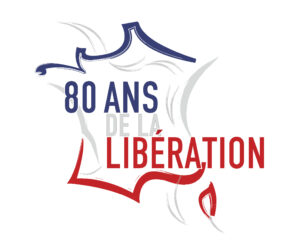


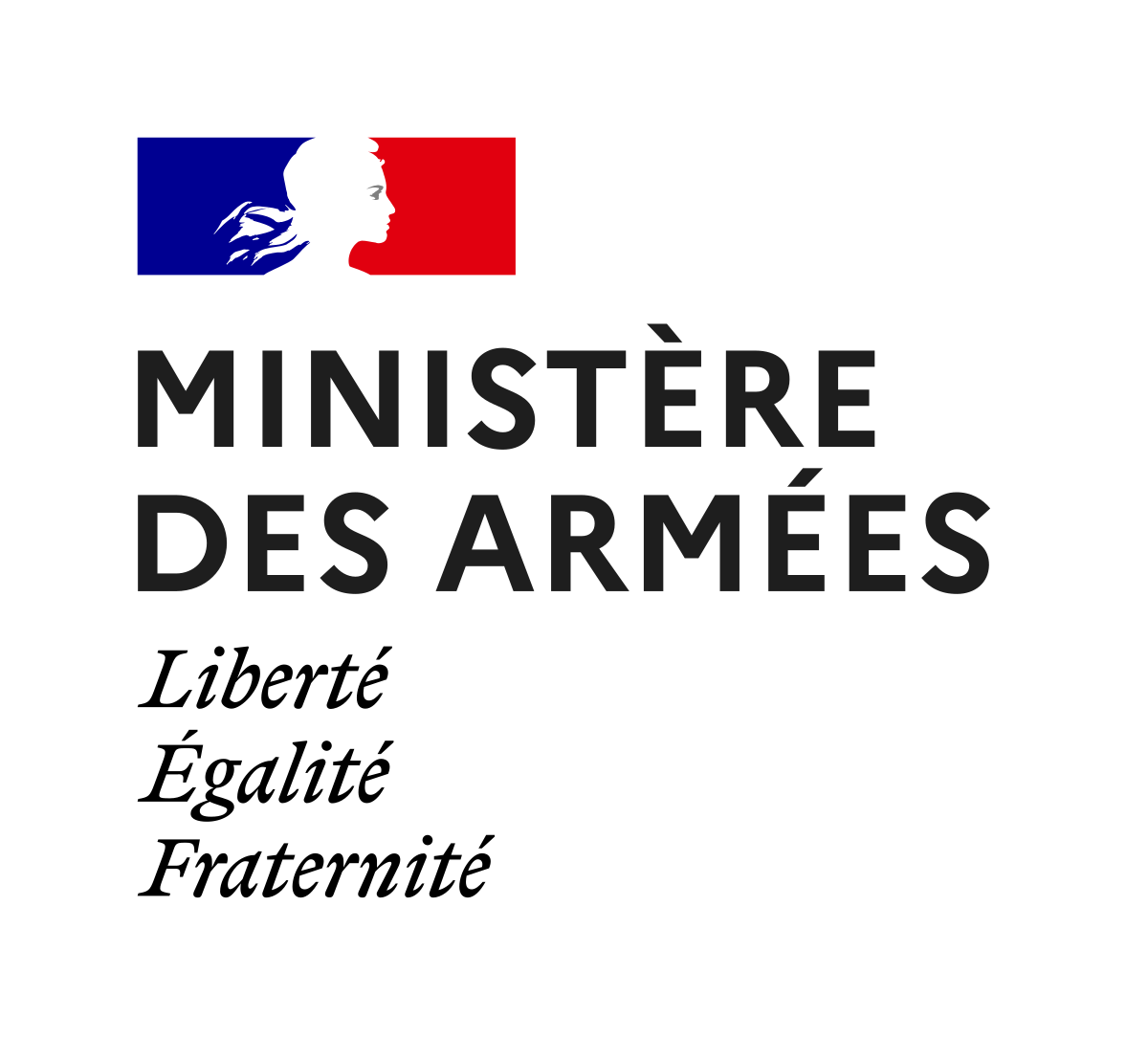
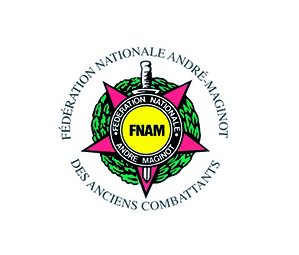
Délégation de Paris
des Amis de la Fondation
pour la Mémoire de la Déportation
31 Boulevard Saint-Germain
75005 Paris
Contact :
afmd75@gmail.com
©AFMD75
Délégation de Paris
des Amis de la Fondation
pour la Mémoire
de la Déportation
31 Boulevard Saint-Germain
75005 Paris
Contact
afmd75@gmail.com
©AFMD75

